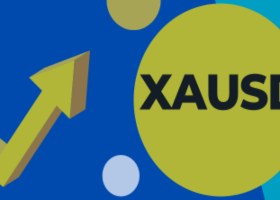
Flow Data Shows Record Buying of Euros, Selling of US Dollars pre-FOMC
FX flows show waning confidence in the dollar as investors decide to back the euro and yen instead.
Swiss lender UBS have released data showing a record rise in buying of EUR/USD in the run up to the March 16 FOMC meeting.
The bank said it registered its highest volume of flows into EUR/USD since it started records ten years ago, after buying from hedge funds and asset managers hit a record peak in the run up to the Federal Reserve’s March meeting.
The note written by Jeremy Chandler and Maximilian Lin describes the net flows as such:
“EURUSD saw the highest weekly net inflows since December 2008, as asset manager net buying was at its highest in 6 years and hedge funds bought the most in over a year. Corporate and private clients meanwhile were modest net sellers.”
A strong rise in yen buying (and dollar selling) was also registered as flows rose into the USD/JPY pair:
“Yen flows saw aggressive buying against the dollar, whilst showing a marginal net-selling bias against the EUR. Hedge funds recorded their strongest week of net-buying against the USD since our records began, with asset managers and private clients selling the yen instead.”
Hedge funds and asset managers who bet on the euro or the yen were rewarded by more than 50 point rally in EUR/USD and a 25 point fall in USD/JPY in the five minutes immediately after the release of the Fed’s policy statement, and even more gains over the period of the rest of the day.
Copy signals, Trade and Earn $ on Forex4you - https://www.share4you.com/en/?affid=0fd9105
Flows into Other Currencies
The charts above show the extent of the flows in and out of each currency in a visual format. The left hand pic shows flows for G10 currencies, whilst the right hand pic shows flows for emerging market currencies.
Apart from the massive EUR and JPY inflows which we have already discussed, as well as the equally large dollar outflows, the other point to note on the left hand graphic is the considerable outflows from the Australian Dollar.
Remarking on the Aussie, UBS state:
“AUDUSD also saw large net-outflows, as asset managers sold the pair following the USD sell-off and after a three-day intraweek rally in oil prices.”
CAD however gained in net inflows – perhaps due to the up-and-coming Federal Budget which investors are viewing as a key positive for the currency.
As far as Emerging Market flows are concerned, the standout currencies are the Mexican Peso and the Korean Wong, which both gained from net buying.
Flow’s Show Prescient Buying Instincts
The flows showed remarkable investor confidence in the euro and yen – as well as a sudden loss of confidence in the dollar.
As expected the Federal Reserve did not change their policy in March, however its members did reduce their expectations of how much interest rates would go up in 2016, from 1.0% previously to 0.5%. This was higher, however, than market expectations of 0.25%.
It is strange the dollar weakened so much after expectations were cut to a 0.50% rate rise, since this was still above the 0.25% level expected – normally the difference would have supported the dollar.
The disparity may have been as a result of a change in the outlook for other central banks such as the ECB and the BOJ.
The ECB and BOJ had been expected to devalue their currencies more aggressively but recently they have either failed to achieve further depreciations or changed their strategy away from manipulating their exchange rate. As such the euro and the yen achieved some lift as expectations of central bank currency weakening lessened.
It could be professional investors foresaw this development, and so were emboldened to act more aggressively in trading the euro and yen higher, whilst selling the dollar.


